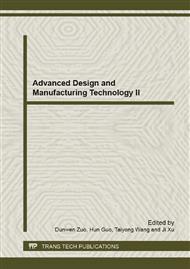p.57
p.65
p.70
p.76
p.80
p.85
p.91
p.97
p.101
Fitting Ellipse Based on the Dual Conic Model
Abstract:
This paper presents an operator that fitting the parameters of ellipses features, and improves the computational efficiency. Based on the dual conic model, this operator directly uses the raw gradient information in the neighborhood of an ellipse’s boundary, which use tangent lines and to apply the estimation in the dual space, so that avoiding the step of precisely extracting individual edge points. Moreover, under the dual representation, the dual conic can easily be constrained to a dual ellipse when minimizing the algebraic distance. The operator presents low sensitivity to noise and is compared to other estimation approaches, which shows good results, the accuracy of this operator is the highest, the time of this operator is moderate that compared with the other methods, and fall within acceptable levels, and in the case of noise or blur, the algorithm have shown very good robustness, in the practical environment can fit the parameters of the ellipse accurately.
Info:
Periodical:
Pages:
80-84
Citation:
Online since:
March 2013
Authors:
Keywords:
Price:
Сopyright:
© 2013 Trans Tech Publications Ltd. All Rights Reserved
Share:
Citation:


